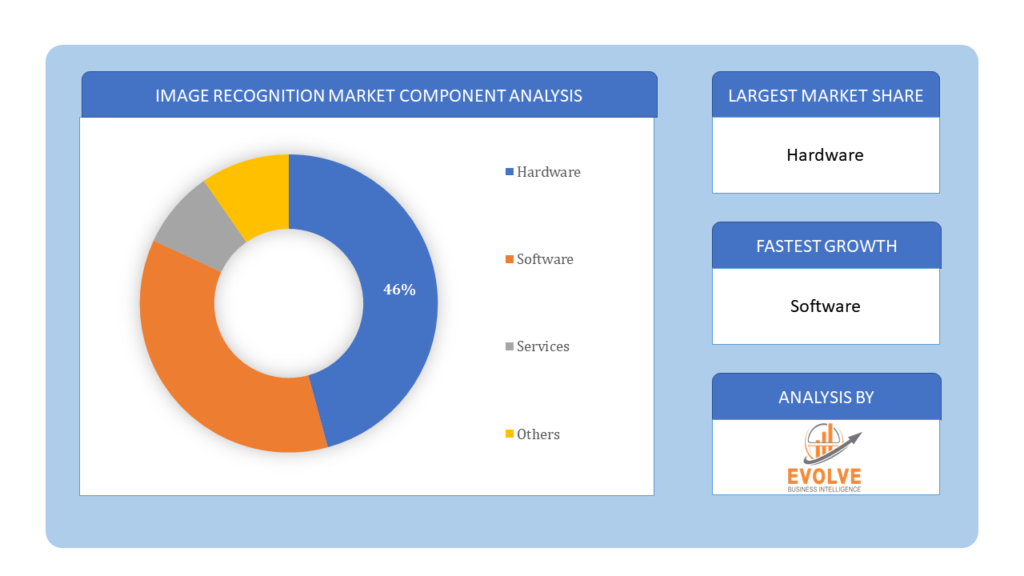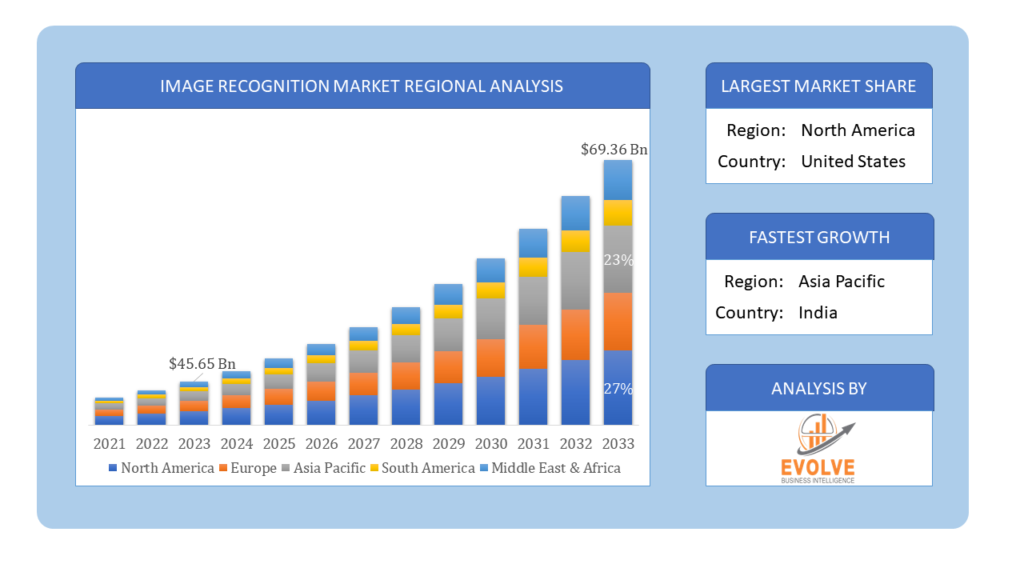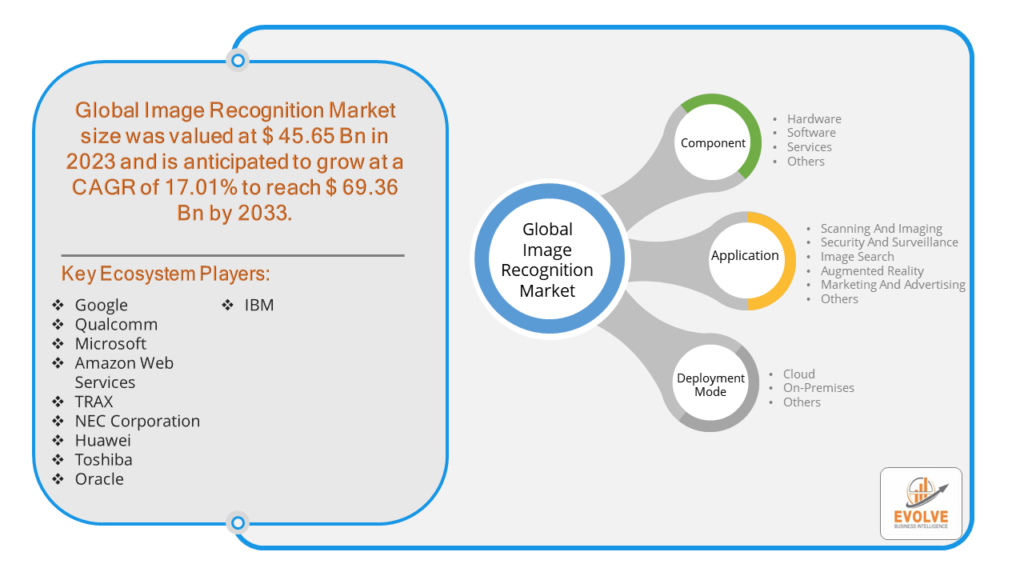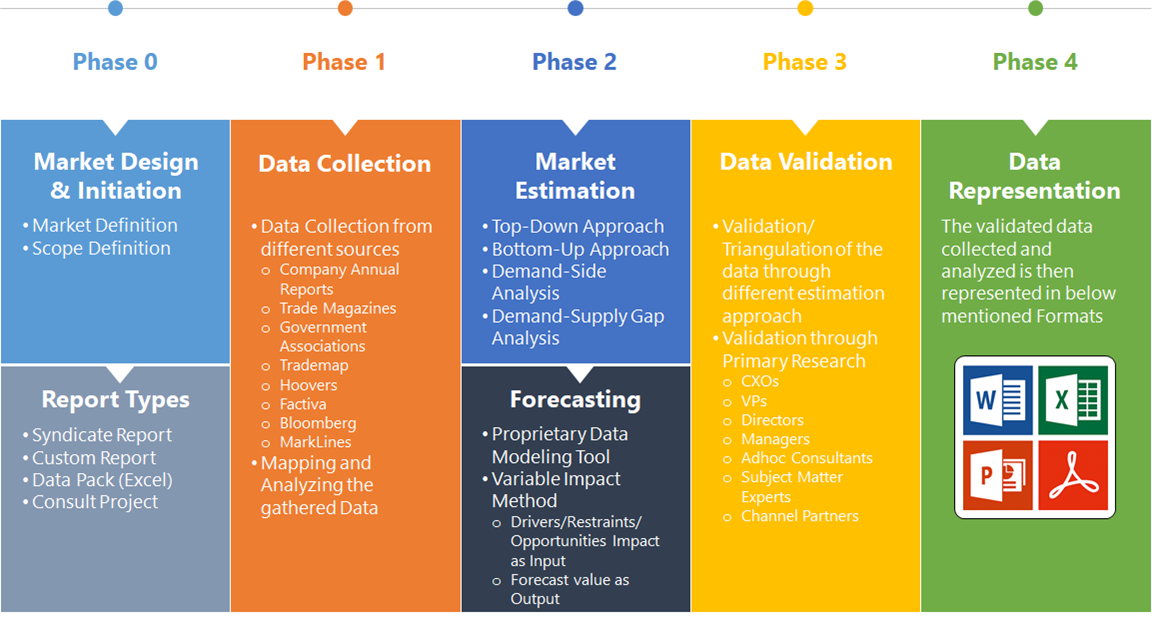Image Recognition Market Overview
The Image Recognition Market Size is expected to reach USD 69.36 Billion by 2033. The Image Recognition Market industry size accounted for USD 45.65 Billion in 2023 and is expected to expand at a compound annual growth rate (CAGR) of 17.01% from 2023 to 2033. The Image Recognition Market refers to the industry focused on developing and utilizing technologies and solutions that enable the identification, detection, and interpretation of images or objects within images. This technology is fueled by advancements in artificial intelligence (AI), particularly machine learning (ML), and computer vision (CV).
The Image Recognition Market is continuously evolving, driven by technological advancements and the increasing integration of image recognition capabilities into a wide array of applications across various industries and the increasing availability of powerful and affordable computing resources.
Global Image Recognition Market Synopsis
The COVID-19 pandemic had a significant impact on the Image Recognition Market. Image recognition has played a crucial role in diagnosing and monitoring COVID-19 patients through medical imaging technologies, such as CT scans and X-rays, improving the accuracy and speed of diagnosis. The pandemic accelerated the use of image recognition in remote patient monitoring and telemedicine, allowing healthcare providers to analyze patient conditions without in-person visits. The pandemic caused delays in the manufacturing and distribution of hardware components essential for image recognition systems, leading to project delays and increased costs. The pandemic has accelerated the adoption of digital and AI-driven solutions, including image recognition, across various industries, leading to more permanent integration of these technologies in business operations. Increased demand for image recognition solutions during the pandemic has spurred innovation, leading to the development of more advanced and versatile image recognition technologies.
Image Recognition Market Dynamics
The major factors that have impacted the growth of Image Recognition Market are as follows:
Drivers:
Ø Adoption in Retail and E-commerce
Retailers are leveraging image recognition to offer personalized product recommendations, virtual try-ons, and visual search capabilities. Automated image recognition systems help in efficient inventory tracking and management, reducing errors and improving operational efficiency. Advances in hardware, including GPUs and specialized processors, have made image recognition technologies more accessible and affordable. Cloud-based image recognition services have reduced the need for extensive on-premise infrastructure, making it easier for businesses to implement these technologies. Ongoing R&D efforts by tech giants and research institutions continue to push the boundaries of what image recognition can achieve.
Restraint:
- Perception of Initial Investment and Privacy and Ethical Concerns
The use of image recognition technologies, particularly in surveillance and facial recognition, raises significant concerns about data privacy and the potential for misuse of personal information. Ethical concerns regarding surveillance, consent, and the potential for discrimination or bias in image recognition systems can lead to public resistance and regulatory scrutiny. The cost of developing and implementing advanced image recognition systems, including hardware, software, and integration, can be prohibitively high for many organizations.
Opportunity:
⮚ Enhanced Healthcare Solutions
Image recognition can improve diagnostic accuracy and treatment planning by analyzing medical images, such as X-rays, MRIs, and CT scans, for early detection of diseases. The technology can facilitate remote consultations and monitoring by analyzing images and videos of patients, making healthcare more accessible and efficient. Image recognition is crucial for the development of autonomous vehicles, enabling them to detect and interpret road signs, pedestrians, and other obstacles for safe navigation. In manufacturing, image recognition can enhance the capabilities of robots, enabling them to perform complex tasks with greater precision and flexibility.
Image Recognition Market Segment Overview
By Component
 Based on Component, the market is segmented based on Hardware, Software, Services and Others. The service segment dominant the market. The service segment encompasses a range of offerings that support the implementation, integration, and maintenance of image recognition solutions. Services include system integration, training and consulting, and ongoing technical support. Trends in this segment indicate a growing demand for specialized services, such as custom algorithm development, to address unique business needs.
Based on Component, the market is segmented based on Hardware, Software, Services and Others. The service segment dominant the market. The service segment encompasses a range of offerings that support the implementation, integration, and maintenance of image recognition solutions. Services include system integration, training and consulting, and ongoing technical support. Trends in this segment indicate a growing demand for specialized services, such as custom algorithm development, to address unique business needs.
By Application
Based on Application, the market segment has been divided into the Scanning And Imaging, Security And Surveillance, Image Search, Augmented Reality, Marketing And Advertising and Others. The marketing and advertising segment refers to the application of image recognition technology in enhancing promotional strategies. This involves analyzing visual content for targeted advertising, personalized marketing campaigns, and interactive experiences.
By Deployment Mode
Based on Deployment Mode, the market segment has been divided into the Cloud, On-Premises and Others. cloud-based segment dominate the market. Cloud deployment offers scalability, flexibility, and cost-effectiveness, allowing businesses to access advanced image recognition capabilities without the need for extensive hardware investments or IT infrastructure management. Cloud-based image recognition platforms also provide seamless updates, integration with other cloud services, and the ability to handle large volumes of data efficiently, making them attractive for enterprises across various industries.
Global Image Recognition Market Regional Analysis
Based on region, the global Image Recognition Market has been divided into North America, Europe, Asia-Pacific, the Middle East & Africa, and Latin America. North America is projected to dominate the use of the Image Recognition Market followed by the Asia-Pacific and Europe regions.
 Image Recognition North America Market
Image Recognition North America Market
North America holds a dominant position in the Image Recognition Market. North America, particularly the United States, is a leader in technological innovation, with significant advancements in AI and machine learning driving the image recognition market. High adoption rates in sectors like retail, healthcare, automotive, and security due to the presence of major technology companies and startups. Stringent regulations around data privacy (e.g., GDPR, CCPA) impact how image recognition technologies are implemented, particularly in surveillance and facial recognition.
Image Recognition Asia-Pacific Market
The Asia-Pacific region has indeed emerged as the fastest-growing market for the Image Recognition Market industry. Countries like China, Japan, and South Korea are rapidly adopting image recognition technologies across various sectors, including retail, automotive, and security. Strong government support and investments in AI and smart city projects drive the growth of the image recognition market. The region is a major hub for consumer electronics, leading to high integration of image recognition in smartphones, cameras, and other devices.
Competitive Landscape
The global Image Recognition Market is highly competitive, with numerous players offering a wide range of software solutions. The competitive landscape is characterized by the presence of established companies, as well as emerging startups and niche players. To increase their market position and attract a wide consumer base, the businesses are employing various strategies, such as product launches, and strategic alliances.
Prominent Players:
- Qualcomm
- Microsoft
- Amazon Web Services
- TRAX
- NEC Corporation
- Huawei
- Toshiba
- Oracle
- IBM
Key Development
In May 2023, MetaStudio, a game development studio from Portugal, revealed a strategic partnership with Immutable, a leading provider of Ethereum Layer 2 scaling solutions. This collaboration is set to transform the gaming metaverse by introducing groundbreaking technologies and advancements. Leveraging MetaStudio’s game development expertise and Immutable’s state-of-the-art scaling solutions, the joint effort aims to redefine the gaming experience and push the boundaries of what is achievable in the virtual world.
In April 2023, Philips and AWS joined forces to migrate Philips HealthSuite Imaging PACS to the cloud, enabling the integration of AI-powered tools to support clinicians. The expanded collaboration with AWS seeks to facilitate the creation and implementation of generative AI applications. These applications are designed to enhance clinical workflows, improve efficiency, and elevate diagnostic capabilities. By harnessing the capabilities of the cloud and AI, Philips and AWS are committed to driving innovation in healthcare and providing clinicians with advanced tools to deliver enhanced patient care.
Scope of the Report
Global Image Recognition Market, by Component
- Hardware
- Software
- Services
- Others
Global Image Recognition Market, by Application
- Scanning And Imaging
- Security And Surveillance
- Image Search
- Augmented Reality
- Marketing And Advertising
- Others
Global Image Recognition Market, by Deployment Mode
- Cloud
- On-Premises
- Others
Global Image Recognition Market, by Region
- North America
- US
- Canada
- Mexico
- Europe
- UK
- Germany
- France
- Italy
- Spain
- Benelux
- Nordic
- Rest of Europe
- Asia Pacific
- China
- Japan
- South Korea
- Indonesia
- Austalia
- Malaysia
- India
- Rest of Asia Pacific
- South America
- Brazil
- Argentina
- Rest of South America
- Middle East & Africa
- Saudi Arabia
- UAE
- Egypt
- South Africa
- Rest of Middle East & Africa
| Parameters | Indicators |
|---|---|
| Market Size | 2033: $69.36 Billion |
| CAGR | 17.01% CAGR (2023-2033) |
| Base year | 2022 |
| Forecast Period | 2023-2033 |
| Historical Data | 2021 |
| Report Coverage | Revenue Forecast, Competitive Landscape, Growth Factors, and Trends |
| Key Segmentations | Component, Application, Deployment Mode |
| Geographies Covered | North America, Europe, Asia-Pacific, Latin America, Middle East, Africa |
| Key Vendors | Google, Qualcomm, Microsoft, Amazon Web Services, TRAX, NEC Corporation, Huawei, Toshiba, Oracle and IBM |
| Key Market Opportunities | • Enhanced Healthcare Solutions • Autonomous Systems and Robotics |
| Key Market Drivers | • Rising Adoption in Retail and E-commerce • Technological Advancements and Cost Reduction |
REPORT CONTENT BRIEF:
- High-level analysis of the current and future Image Recognition Market trends and opportunities
- Detailed analysis of current market drivers, restraining factors, and opportunities in the future
- Image Recognition Market historical market size for the year 2021, and forecast from 2023 to 2033
- Image Recognition Market share analysis at each product level
- Competitor analysis with detailed insight into its product segment, Government & Defense strength, and strategies adopted.
- Identifies key strategies adopted including product launches and developments, mergers and acquisitions, joint ventures, collaborations, and partnerships as well as funding taken and investment done, among others.
- To identify and understand the various factors involved in the global Image Recognition Market affected by the pandemic
- To provide a detailed insight into the major companies operating in the market. The profiling will include the Government & Defense health of the company’s past 2-3 years with segmental and regional revenue breakup, product offering, recent developments, SWOT analysis, and key strategies.





